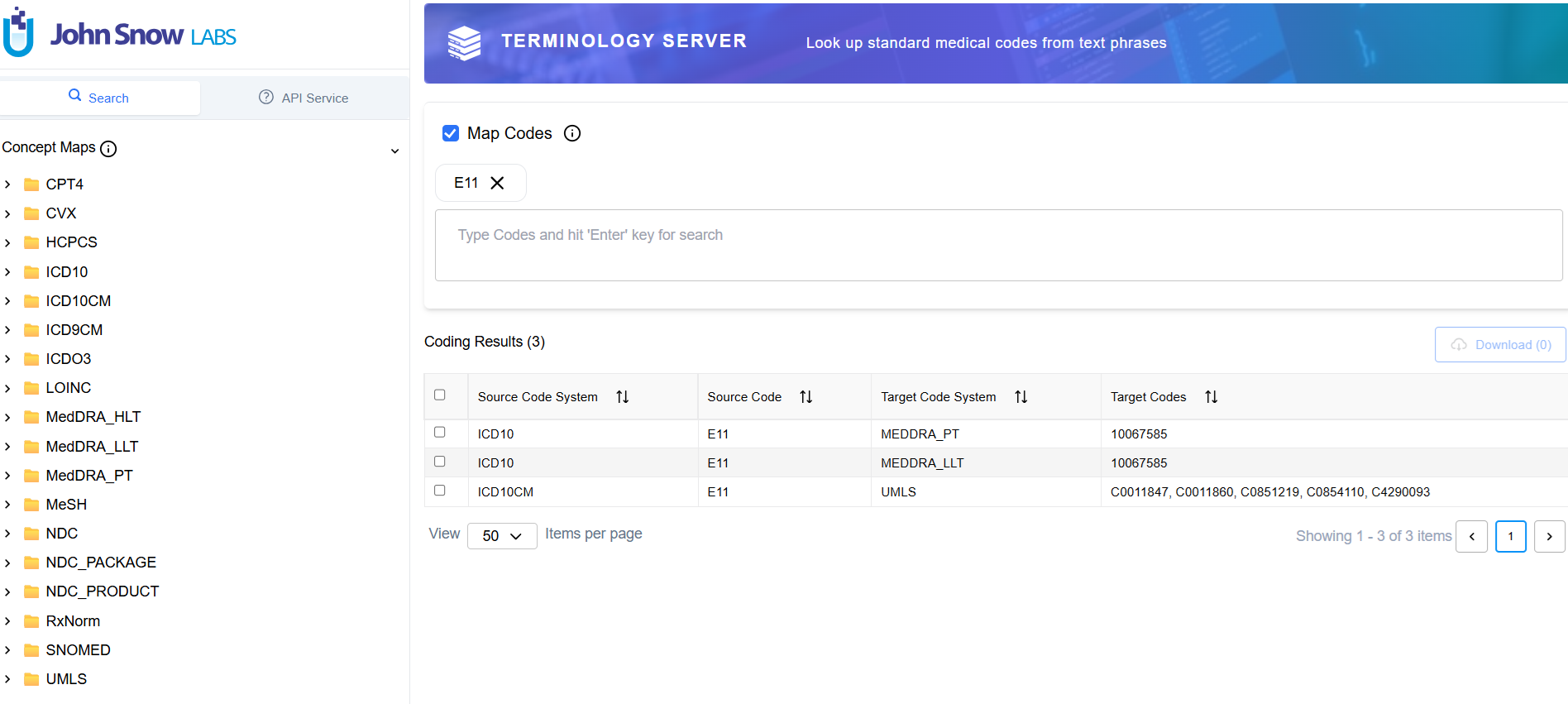Code Systems

In healthcare, medical coding systems are standardized sets of codes used to classify diseases, treatments, medications, lab results, and clinical concepts. Each system serves a specific purpose:
- ICD10: Classifies diseases and health conditions.
- CPT4: Used to describe medical procedures and services.
- LOINC: Codes for lab tests and clinical measurements.
- RxNorm: Normalized names for drugs and medications.
- SNOMED CT: A comprehensive system for clinical terms used in electronic health records.
- UMLS: A unifying system that connects terms across multiple vocabularies.
- MeSH: Medical subject headings used in biomedical literature indexing.
Each system uses codes (e.g., E11 for Type 2 Diabetes in ICD10) to represent a specific medical concept.
Different healthcare roles and use cases require different systems:
- A physician documents diagnoses using ICD10.
- A lab uses LOINC to record test results.
- A pharmacist references RxNorm to prescribe medications.
- A clinical researcher might use MeSH to search publications.
This diversity improves accuracy and efficiency within each domain—but it also creates fragmentation.
⚠️ The Challenge
When data is spread across different coding systems, it becomes difficult to:
- Exchange information across systems or institutions.
- Analyze data uniformly.
- Integrate clinical and administrative workflows.
For example, one system may document a condition as “Essential Hypertension” (SNOMED), while another uses the ICD10 code I10.
✅ The Solution: Search and Map Across Systems Terminology Server application solves this problem by:
- Letting users search for medical concepts (e.g., “diabetes,” “hypertension”) across multiple systems at once.
- Returning the corresponding codes in each system.
- Showing mappings—links between equivalent or related codes across systems.
This means users can see - as exemplified in the top image, how E11 in ICD10 (Type 2 diabetes) maps to 10067585 in MEDDRA_PT( standardized, single medical concepts used to represent a symptom, sign, disease, diagnosis, etc) and how to E11 in ICD10CM (coding diseases, conditions, and injuries for statistical and billing purposes) maps to C0011847 in UMLS.